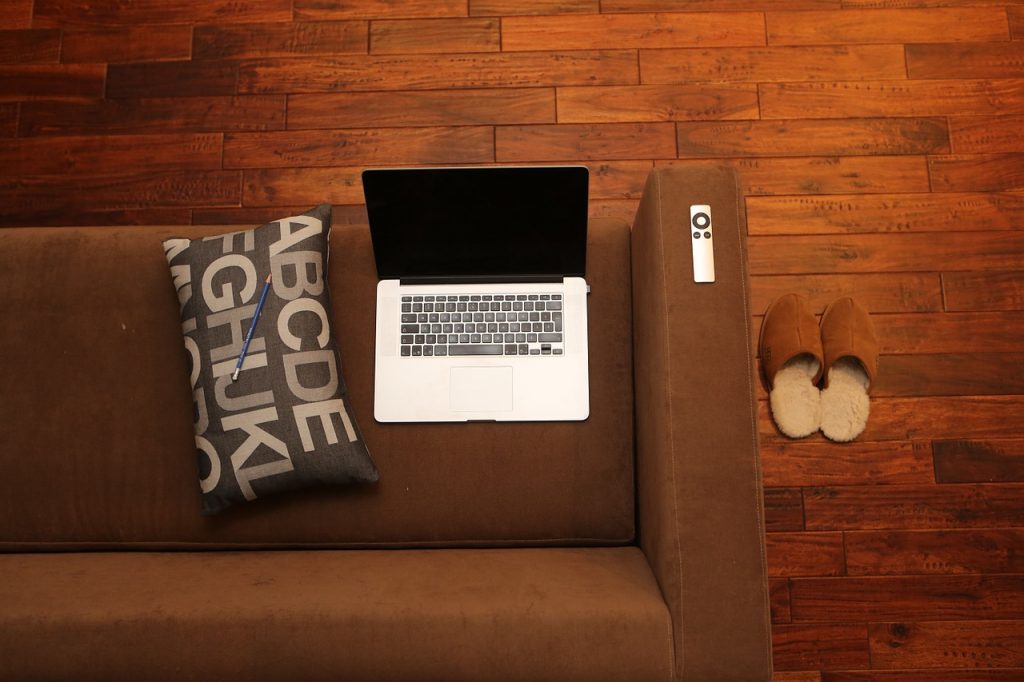Ask Brian is a weekly column by Real Estate Expert Brian Kline. If you have questions on real estate investing, DIY, home buying/selling, or other housing inquiries please email your questions to [email protected].

Question from Traci in MN: Hey Brian, I’ve been working from home since April with no end in sight. I made several electronic upgrades at the beginning with a bigger monitor, a better printer, and a hard drive backup. My workspace is in an alcove with plenty of sunshine and I thought I had what I needed until I could go back to my office. But as weeks stretch into months, I want to make some more improvements to my work at home arrangement. Mostly, I need more desktop and storage space. The problem is that my sunny alcove is full and I don’t want to relocate to another part of the house where the family will distract me and I’ll be in their way. Got any ideas?
Answer: Hi Traci. That sounds like a DIY project that many readers will be interested in without spending a ton of money. Here are a few inexpensive and practical projects to get you started. You never know, after a few improvements, you may not ever want to go back to your corporate office.
Multiple ideas for temporary desk space. Two good ideas to increase your desktop space are using something temporary that you can fold up when you don’t need it or integrating your file storage into your desk. Temporary can be as easy as a folding table. If you only need a small addition, it can be nothing more than a TV tray (maybe a decent one made from wooden). Another idea is an old-fashion folding card table. And yet another one that comes to mind are the lightweight plastic folding tables I’ve seen used in the fellowship halls at churches (about 6 ft. by 3 ft.). Traci, those do take up more space while you’re working but you can fold them up at the end of your workday.
Combining your desk with file storage. If your current workspace has a tall 4-drawer file cabinet, you can replace it with two shorter 2-drawer file cabinets that become the support for your desktop. All you need to do is place the short file cabinets far enough apart for your chair and legs to go under the desk and place a board(s) on top of the cabinets to be the desktop. You have several options for the desktop. You could just cut a piece of plywood or strand board to the right size (you might want to cover it with a decorative tablecloth). Another option is solid pine boards (or mahogany, cherry, etc.). You’ll need about five planks that are 1” X 6”. Sort through what is at the lumber store to find boards that are as flat as possible. You can customize cut the desk length (6 ft., 8 ft., 10 ft.). On the bottom side of the planks, secure them together by screwing 2×2 pieces of wood crosswise to the planks. You’ll want to sand the top surface smooth and clear coat it. If you want to spend a little more money, you can look in the kitchen section at the hardware store for a stone countertop to use as a desktop over the file cabinets. Another version is simply adding one of these larger surfaces on top of the desk that you are already using. A final thought is adding a tiered shelf on top of your existing desk.
Use wall space efficiently. You might have to take down a favorite picture or two but there is probably usable space on the walls in your work area. A couple of ideas are the wall-mounted magazine racks that you might have seen in a doctor’s or dentist’s waiting room. For even more wall-mounted storage, consider mounting the upper half of a china hutch by attaching it to the wall studs. Of course, there are other office wall solutions like whiteboards and corkboards for high visibility reminders, priority/to-do lists, etc. Traci, let’s think about that desk space again. Would a wall-mounted fold down desktop be a better answer for your space needs? Think about something like a Murphy bed folding down from the wall.
Be creative with room dividers. If you do need to move into the family room or another shared area, room dividers might be the answer. For instance, a divider behind the couch in the living room could partition your office space. You have a ton of DIY possibilities here also. For the cost of a good set of hinges, you could make collapsible room dividers by repurposing a set of tall window shutters or other wood. You could even modify a set of folding closet doors for the purpose.
Traci, regardless of the solution that you decide works best for you, don’t overlook ergonomics. Make sure you have plenty of light, the desktop is at the right height, the computer monitor is at eye-level and the correct distance from your eyes, and that you have a comfortable chair that supports your back the entire workday.
Let’s hear your simple and inexpensive DIY ideas for home offices. Please add comments.
Our weekly Ask Brian column welcomes questions from readers of all experience levels with residential real estate. Please email your questions or inquiries to [email protected].